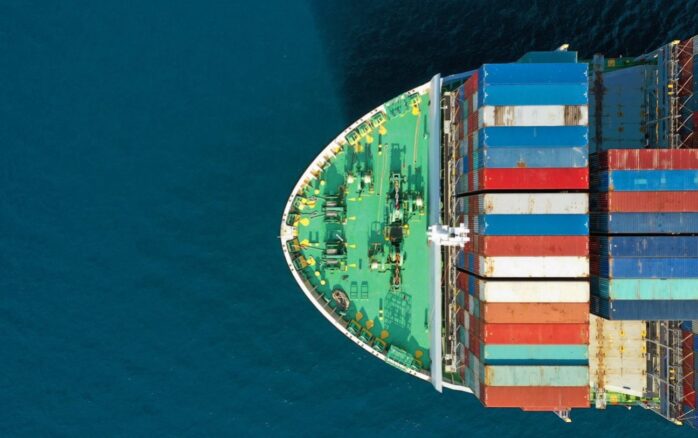In today’s world, the pressing urgency of environmental conservation is not just a moral obligation, but a practical necessity for businesses. As concerns rise over climate change and pollution, a spotlight has been thrown on the shipping industry due to the significant environmental footprint it leaves behind.
As part of the industry and consumers’ collective response, the concept of environmentally friendly shipping or green shipping has gained immense importance. But the question remains: Can environmental responsibility in shipping also translate into cost savings?
Environmentally Friendly Shipping

To better understand the financial implications of eco-friendly shipping, including the potential for cheap shipping, we first need a clear picture of what environmentally friendly shipping entails.
Essentially, environmentally friendly or green shipping is an approach that aims to reduce the negative impacts of shipping operations on the environment.
This can involve everything from using lower emission fuels and implementing energy-efficient technologies, to optimizing shipping routes for fuel conservation and adopting recyclable packaging materials.
Green shipping does not only focus on the environment but also includes a social and economic dimension, seeking to establish a sustainable and responsible business model.
It’s also important to note that green shipping methods are not one-size-fits-all. The environmentally friendly shipping methods pursued by a business can vary greatly, depending on the nature of the goods being shipped, the geographical areas they operate in, their budget constraints, and their overarching sustainability goals.
With advancements in technology, a plethora of options is available for businesses to choose from, such as electric trucks, solar-powered ships, and more.
But which of these are cost-effective? Is it possible to be environmentally friendly without incurring significant costs? The answers to these questions are complex but vital for businesses willing to invest in green shipping.
The Current Cost of Traditional Shipping

Understanding the cost framework of traditional shipping methods helps lay the groundwork for comparing them to environmentally friendly alternatives. Conventional shipping costs change around several key factors including fuel prices, labor, maintenance, and infrastructure.
While these costs are viewed as standard expenses of doing business, the financial implications become substantial when you consider the volume of goods shipped globally every day.
For instance, marine shipping, one of the most common traditional shipping methods, constitutes more than 80% of global trade by volume, amplifying these standard costs on a massive scale.
However, these overt costs are only a section of the picture. There are additional financial burdens often overlooked which are linked to the environmental impact of traditional shipping practices, known as external costs.
These include climate change effects, air pollution, noise pollution, and damage to infrastructure, among others.
For instance, the clean-up of oil spills, a hazardous potential consequence of marine shipping, can amount to billions of dollars. These hidden expenses aren’t typically accounted for in a company’s balance sheet, but they place a considerable drain on global resources.
As more businesses and consumers awaken to these hidden costs, the pursuit for more sustainable, and potentially cheaper, shipping methods becomes paramount.
The Cost of Environmentally Friendly Shipping

Switching to green shipping methods typically involves upfront investment in advanced, eco-friendly technologies. These may include solar or wind-powered systems, more efficient engines, cleaner fuels, and so on.
Additionally, there can be costs related to training employees on new procedures, acquiring necessary certifications, and potentially higher maintenance costs due to resource scarcity for new technologies.
However, it’s important to look beyond the initial costs and consider the potential for long-term savings. Green shipping practices often result in reduced fuel consumption, which could lead to significant savings given that fuel often represents one of the largest operating costs for shipping companies.
Incentives provided by governments and organizations for adopting sustainable practices can also offset the cost. Lower emissions imply less environmental tax liability in regions where such measures are enforced.
Therefore, while the initial investment may seem steep, the long-term financial benefits are worthy of serious consideration. Initiating your sustainable shipping transition today could very well result in a cheaper, cleaner tomorrow.
The Future of Green Shipping
As we look towards the future, the field of green shipping is expected to progress dramatically. With increased research and development into renewable energy and cleaner technologies, the cost of these resources is likely to go down.
Innovations such as autonomous ships, more efficient batteries for electric-powered ships, AI-powered route optimization, and biofuels are making green shipping more feasible and cost-effective.
This could significantly reduce overheads related to fuel consumption and maintenance, further tipping the balance in favor of green shipping from a cost perspective. Changes in policy and further tightening of environmental regulations will have larger implications for the shipping industry.
Companies who adopt green shipping early might avoid stringent penalties, higher taxes or increased insurance premiums in the future. Additionally, as consumers become increasingly environmentally conscious, businesses practicing green shipping could gain a competitive edge, driving increased customer loyalty and potentially higher profits.
Essentially, the future of green shipping not only seems promising for the environment but also for businesses seeking cost-effective solutions.
Conclusion

Environmentally friendly shipping appears as a viable path towards not only a sustainable environment but also a more balanced bottom line, making it a wise business decision. Transitioning to sustainable shipping methods represents a long-term strategy that offers a wealth of benefits, both financially and ethically.
With the increasing importance of corporate responsibility and environmental stewardship, it’s high time businesses initiated the move towards more sustainable shipping solutions.



















